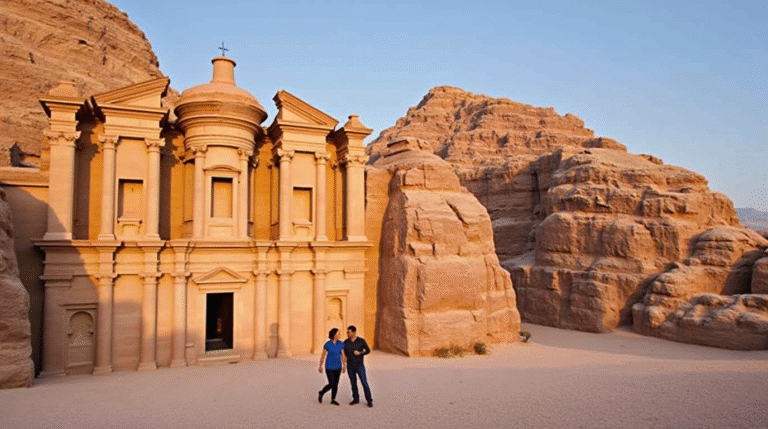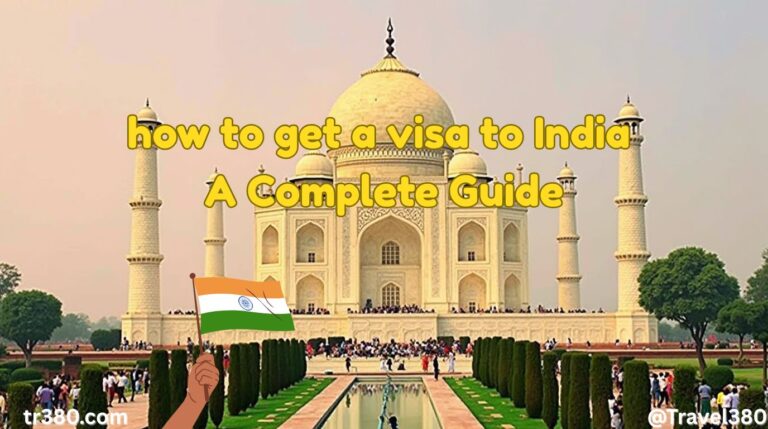Visit Japan: A Complete Travel Guide for First-Time Travelers

Table of Contents
🌸 Best Places to Visit in Japan – A Traveler’s Guide
Japan is a mesmerizing blend of modernity and tradition, offering something for every type of traveler. Whether you’re drawn to futuristic cityscapes, centuries-old shrines, or peaceful mountain retreats, here are some of the top destinations you shouldn’t miss when visiting Japan.
1. Tokyo – The Beating Heart of Modern Japan
As Japan’s capital and one of the world’s most dynamic cities, Tokyo is a mix of neon-lit skyscrapers, historic neighborhoods, and cutting-edge technology.
📍 Must-See Attractions:
- Shibuya Crossing – The world’s busiest pedestrian scramble
- Senso-ji Temple – Tokyo’s oldest temple in Asakusa
- Meiji Shrine – Serene Shinto shrine surrounded by forest
- Skytree & Tokyo Tower – Panoramic views of the city
- Akihabara – Tech mecca and anime culture hub
🍜 Food Tip: Try sushi at Tsukiji Outer Market or ramen in Shinjuku.
2. Kyoto – Timeless Beauty of Traditional Japan
Once Japan’s imperial capital, Kyoto is home to over 1,000 temples, traditional tea houses, and stunning gardens.
📍 Must-See Attractions:
- Fushimi Inari Shrine – Famous for its endless red torii gates
- Kinkaku-ji (Golden Pavilion) – Stunning gold-covered Zen temple
- Arashiyama Bamboo Grove – Iconic bamboo-lined path
- Gion District – Where geisha still walk the streets
- Kiyomizu-dera Temple – Offers breathtaking views of Kyoto
👘 Cultural Tip: Consider wearing a kimono during your visit for an authentic experience.
3. Osaka – Foodie Paradise with a Fun Vibe
Known as the “Kitchen of Japan,” Osaka is famous for its street food, friendly locals, and vibrant nightlife.
📍 Must-See Attractions:
- Osaka Castle – Historic fortress with beautiful grounds
- Dotonbori – Brightly lit district full of restaurants and entertainment
- Universal Studios Japan – Home to the famous Super Nintendo World
- Umeda Sky Building – Offers panoramic city views
🍢 Food Tip: Don’t miss takoyaki (savory octopus balls) or okonomiyaki (Japanese savory pancake).
4. Hiroshima – A City of Peace and History
While known for its tragic past, Hiroshima is now a symbol of resilience and peace, with many moving memorials and museums.
📍 Must-See Attractions:
- Hiroshima Peace Memorial Park & Museum
- Atomic Bomb Dome – UNESCO World Heritage Site
- Miyajima Island – Famous for Itsukushima Shrine and floating torii gate
🌸 Travel Tip: Miyajima is especially beautiful during cherry blossom season.
5. Nara – Ancient Capital and Deer Haven
Just a short train ride from Kyoto, Nara was Japan’s first permanent capital and is filled with historical treasures.
📍 Must-See Attractions:
- Todai-ji Temple – Home to the Great Buddha statue
- Nara Park – Hundreds of free-roaming deer roam here
- Kasuga Taisha Shrine – Known for its thousands of bronze and stone lanterns
🦌 Fun Fact: The deer in Nara are considered sacred and will gently nibble your snacks!
6. Hokkaido – Winter Wonderland & Nature Escape
Japan’s northernmost island is known for its snowy landscapes, ski resorts, and natural beauty.
📍 Must-See Attractions:
- Sapporo – Host city of the Snow Festival
- Blue Pond (Biei) – Surreal turquoise-colored pond
- Shikotsu-Toya National Park – Volcanoes, lakes, and hot springs
- Otaru Canal – Romantic canal walk with glass art displays
⛷️ Best Time to Visit: December–February for winter sports, or summer for hiking and flower fields.
7. Naoshima – Art Island in the Seto Inland Sea
For lovers of contemporary art and minimalist architecture, Naoshima is a must-visit island that blends nature and creativity.
📍 Must-See Attractions:
- Chichu Art Museum – Underground museum with works by Monet, James Turrell, and Walter De Maria
- Benesse House – Hotel and art museum combined
- Pumpkin Sculpture by Yayoi Kusama – Instagram-famous spot by the sea
🎨 Tip: Combine a visit with nearby islands like Teshima and Inujima for a full art tour.
8. Kanazawa – Hidden Gem of the Japan Sea Coast
Kanazawa offers a quieter alternative to Kyoto with equally impressive cultural sites and gardens.
📍 Must-See Attractions:
- Kenrokuen Garden – One of Japan’s top three gardens
- Kanazawa Castle – Historic castle complex
- Samurai District (Nagamachi) – Explore preserved samurai homes
- Gold Leaf Everything – Kanazawa produces most of Japan’s gold leaf!
9. Takayama – Alpine Town with Old-World Charm
Located in the Japanese Alps, Takayama feels like stepping back in time.
📍 Must-See Attractions:
- Old Town (Sanmachi Suji) – Traditional merchant streets
- Morning Market – Fresh seafood, pickles, and local crafts
- Hida Folk Village – Open-air museum of old mountain houses
🍻 Local Drink: Try Hida beef skewers and regional sake.
10. Okinawa – Tropical Escape in Southern Japan
If you’re craving sun, sea, and relaxation, head to Okinawa.
📍 Must-See Attractions:
- Zamami Island & Kerama Islands – Pristine beaches and coral reefs
- Okinawa Churaumi Aquarium – One of the largest in the world
- Peace Memorial Park – Reflective site dedicated to WWII history
🌴 Best Time to Visit: April–October for beach weather
🌸 Cultural Etiquette for Travelers in Japan – A Guide to Respecting Local Customs
Japan is known for its deep-rooted traditions, politeness, and attention to detail. As a visitor, understanding and following basic cultural etiquette will not only earn you the respect of locals but also enhance your overall travel experience. Here are the key things every traveler should know:
1. Bowing is Common (Handshakes Are Less So)
- Why it matters: Bowing is the traditional way to greet, thank, or apologize in Japan.
- How to do it: A slight nod of the head is fine for tourists. Deeper bows indicate more respect.
- When to bow: When entering a ryokan (traditional inn), after receiving service, or when saying thank you.
📌 Tip: A polite smile and “Arigatou gozaimasu” (Thank you very much) goes a long way.
2. Remove Shoes Indoors
- Where to do it: In homes, temples, ryokans, some restaurants, and traditional accommodations.
- Look for cues: Slippers are often provided — sometimes you’ll need to switch into indoor slippers or go barefoot.
- Don’t wear socks with holes: Visible toes can be considered impolite.
📌 Tip: Wear clean socks — feet are often visible when sitting on tatami mats.
3. Be Mindful of Public Behavior
- Keep noise low: Trains, buses, and public places are generally quiet.
- Avoid eating while walking: It’s uncommon and may be seen as impolite.
- No tipping: Service charges are included, and tipping can confuse or even offend staff.
📌 Tip: If unsure, observe what locals are doing — they’re usually a great example.
4. Respect Onsen (Hot Spring Baths)
- Rules apply: Before entering, wash thoroughly at the provided stations.
- Tattoos: Many onsens don’t allow people with visible tattoos due to historical associations with yakuza (gangsters). Some now accept small tattoos if covered.
- Nudity: Full nudity is normal — towels are used to cover modesty while washing, but not in the bath.
📌 Tip: Ask ahead if tattoos are allowed or consider visiting tattoo-friendly spas or sento (public baths).
5. Handle Money & Cards Politely
- Use both hands: When giving or receiving money, business cards, or documents — especially from or to older individuals.
- Use a money tray: In shops and restaurants, money is often passed via a small tray.
📌 Tip: Avoid shoving cash or cards directly into someone’s hand.
6. Queue and Respect Personal Space
- Line up patiently: Whether at train stations, ticket counters, or convenience stores.
- Avoid physical contact: Japanese culture values personal space — keep distance in crowded places.
📌 Tip: Even in busy trains, people remain quiet and orderly.
7. Table Manners Matter
- Don’t stick chopsticks upright: In bowls of rice, this resembles incense at funerals.
- Pass food with chopsticks: Use the opposite end or a serving utensil.
- Pour drinks for others: Especially with alcohol — it’s polite to pour for your companions before yourself.
📌 Tip: Say “Itadakimasu” before eating and “Gochisosama deshita” after finishing.
8. Photography Do’s and Don’ts
- Ask before taking photos of people: Especially in rural areas or during festivals.
- No photos in onsens or private homes: Always get permission first.
- Temples & museums: Look for signs — some prohibit flash photography or tripods.
📌 Tip: Be especially respectful during religious ceremonies or rituals.
9. Littering is Rare and Not Accepted
- Carry trash with you: Public bins are limited, and locals rarely litter.
- Recycle properly: Bins are often separated into burnable, plastic, and cans.
📌 Tip: Keep a small bag in your backpack for garbage until you find a proper bin.
10. Train Etiquette Is Strict
- No phone calls: Talking on phones is discouraged on trains.
- Priority seats: Avoid sitting here unless you qualify (elderly, pregnant, disabled).
- Eat quietly: If allowed, choose non-smelly snacks and avoid mess.
📌 Tip: The Shinkansen (bullet train) is fast, efficient, and punctual — enjoy the ride!
💰 Budget Travel Tips for Japan – How to Explore on a Shoestring
Japan might not be Southeast Asia cheap, but with smart planning and local insights, you can travel here comfortably on a budget. Here’s how:
1. Use a Japan Rail (JR) Pass Wisely
- What it is: A pre-paid rail pass that allows unlimited travel on JR trains, including Shinkansen (bullet trains).
- Best for: Multi-city trips (e.g., Tokyo → Kyoto → Hiroshima)
- Cost: 7-day pass ~ ¥29,000 (~$200 USD), 14-day ~ ¥46,000, 21-day ~ ¥62,000
- Tip: Buy it before arriving in Japan. Calculate if it pays off based on your planned train journeys.
📌 Alternative: Use regional passes or book regular tickets online in advance for cheaper rates.
2. Stay in Budget Accommodation
There are many affordable places to sleep in Japan:
- Hostels & Guesthouses: From $15–30/night in cities like Osaka, Kyoto, and Fukuoka.
- Capsule Hotels: Unique and super cheap ($20–30/night), especially in Tokyo and Osaka.
- Business Hotels: Compact but clean and affordable ($40–60/night).
- Airbnb: Often good value for longer stays or groups.
- Ryokan Stays: Some budget ryokans offer traditional experiences at reasonable prices.
📌 Pro Tip: Book through Booking.com , Hostelworld , or Agoda for last-minute deals.
3. Eat Like a Local
Food in Japan can be surprisingly affordable if you know where to go:
- Convenience Stores: 7-Eleven, FamilyMart, and Lawson sell tasty, inexpensive meals like bento boxes, sandwiches, and onigiri (rice balls).
- Standing Sushi/Yakitori Shops: No seats = lower prices. Try places like Sukiyabashi Jiro Downtown or Torikizoku .
- Local Ramen Shops: Great bowls from ¥700 (~$5).
- All-you-can-eat Menus: Many restaurants offer set lunch menus (from ¥800–1,200).
- Avoid Tourist Areas: Restaurants near major sights often charge premium prices.
📌 Tip: Look for “定食” (teishoku) — full meals with rice, soup, and side dishes.
4. Get Around Smartly
Transportation doesn’t have to eat up your budget:
- IC Cards: Suica (the “Welcome Suica”) or Pasmo cards work across most of Japan — tap-and-go convenience.
- Subway Day Passes: Great for tourists doing multiple rides in one day.
- Buses: Cheaper than trains for short distances, but slower and harder to navigate.
- Walking: Many cities (like Kyoto, Kanazawa, and Nara) are very walkable!
📌 Tip: Rent a bike in cities like Kyoto or Osaka for easy and cheap transport.
5. Free & Low-Cost Attractions Abound
You don’t need to spend much to enjoy Japan’s beauty and culture:
- Temples & Shrines: Most are free to enter.
- Parks & Gardens: Ueno Park (Tokyo), Maruyama Park (Kyoto), Kenrokuen Garden (Kanazawa).
- Free Walking Tours: Available in Tokyo, Kyoto, Osaka, and Hiroshima.
- Museum Discounts: Students and seniors often get reduced entry fees.
- Look for Free Entry Days: Some museums and attractions offer them monthly or seasonally.
📌 Tip: Visit during cherry blossom season or autumn for free natural beauty!
6. Shop Smart
- Don Quijote: Affordable souvenirs, snacks, drinks, and daily essentials.
- 100-Yen Stores: Think Dollar Tree but better — great for snacks, travel-sized toiletries, and cute gifts.
- Avoid Duty-Free at Airports: Prices are often higher than city shops.
📌 Tip: Souvenir shopping in Akihabara (Tokyo) or Dotonbori (Osaka) offers fun finds without the tourist markups.
7. Plan Around Peak Seasons
- Cherry Blossom Season (March–April): Crowded and expensive.
- Golden Week (Late April–Early May): High prices, packed trains.
- New Year (December–January): Many businesses closed; accommodation costs rise.
📌 Best times to visit on a budget:
- Early Autumn (September–October)
- Late Winter (February)
8. Use SIM Cards or Pocket Wi-Fi
- Prepaid SIM Cards: Available at airports and electronics stores (¥2,000–3,000/month).
- Pocket Wi-Fi Rentals: Great for groups or long-term travelers.
- Free Wi-Fi Spots: Increasingly available in stations, cafes, and tourist centers.
📌 Tip: Download Google Translate offline maps and phrasebook for easy communication.
9. Travel Off the Beaten Path
Skip the crowded cities and explore lesser-known gems:
- Takayama & Shirakawa-go – Traditional villages and mountain views.
- Kanazawa – Beautiful gardens, samurai districts, and gold leaf everything.
- Naoshima – Art island with unique museums and architecture.
- Okinawa – Tropical beaches and WWII history.
📌 Bonus: These places are quieter, more authentic, and often cheaper.
10. Learn Basic Japanese Phrases
Knowing just a few phrases can save time and money:
- “Ikura desu ka?” – How much is this?
- “Arigatou gozaimasu” – Thank you
- “Sumimasen” – Excuse me / Sorry
- “Wakarimasen” – I don’t understand
- “Onegaishimasu” – Please
📌 Tip: Use translation apps like Google Translate or VoiceTra for real-time help.
🗺️ Sample Travel Itineraries for Japan
🌸 1. 3-Day Tokyo Itinerary – Perfect for First-Time Visitors
Ideal for those with limited time but want to experience the best of Japan’s capital.
Day 1: Explore Central Tokyo
- Morning: Visit Senso-ji Temple & shop at Nakamise Street
- Afternoon: Head to Skytree for city views + lunch in Asakusa
- Evening: Shibuya Crossing, Scramble Crossing & dinner in Shibuya
Day 2: Modern Meets Historical
- Morning: Meiji Shrine & Yoyogi Park
- Afternoon: Explore Shibuya & Harajuku (Takeshita Street)
- Evening: Dinner in Ginza or Akihabara (tech/electric town)
Day 3: Day Trip from Tokyo
- Option A: Kamakura & Enoshima Island (Great Buddha, shrines, seaside views)
- Option B: Nikko (UNESCO World Heritage Site with Toshogu Shrine)
🏯 2. 5-Day Cultural Journey – Kyoto, Osaka & Nara
Perfect for travelers interested in temples, gardens, and traditional Japan.
Day 1: Arrival in Osaka
- Explore Dotonbori & try street food like takoyaki
- Stay overnight in Osaka
Day 2: Osaka to Kyoto
- Morning: Visit Osaka Castle
- Afternoon: Take train to Kyoto; visit Fushimi Inari Shrine
- Evening: Walk around Gion District
Day 3: Kyoto Highlights
- Morning: Tour Kinkaku-ji (Golden Pavilion)
- Afternoon: Stroll through Arashiyama Bamboo Grove
- Evening: Optional geisha show or kaiseki dinner
Day 4: Day Trip to Nara
- See Todai-ji Temple and friendly deer in Nara Park
- Return to Kyoto for final night
Day 5: Departure
- Explore local markets or last-minute shopping
- Head to airport or continue journey elsewhere
🧭 3. 7-Day Japan Itinerary – Tokyo, Kyoto, Hiroshima & Osaka
For travelers who want a mix of city life, history, and nature.
Day 1–2: Tokyo
- Follow the 3-day Tokyo itinerary above
Day 3: Train to Kyoto (via Shinkansen)
- Stop at Hakone for views of Mount Fuji (optional)
- Arrive in Kyoto in the evening
Day 4–5: Kyoto & Nara
- Follow the 2-day Kyoto & Nara plan
Day 6: Hiroshima Day Trip
- Take bullet train to Hiroshima
- Visit Peace Park , Atomic Dome , and Miyajima Island
- Return to Kyoto or head to Osaka
Day 7: Osaka
- Explore Osaka Castle , Umeda Sky Building , and Dotonbori
- Depart from Kansai International Airport (KIX)
⛷️ 4. 7-Day Nature Lover’s Itinerary – Hokkaido Adventure
For those who love mountains, snow, and natural beauty.
Day 1: Arrival in Sapporo
- Explore Odori Park & Sapporo Clock Tower
- Enjoy seafood at Sapporo Central Market
Day 2: Sapporo & Around
- Visit Moerenuma Park
- Optional: Snow Festival (if visiting in February)
Day 3: Blue Pond & Biei
- Drive to Blue Pond and enjoy scenic countryside
- Overnight in Furano or Biei
Day 4: Lake Toya & Volcano Hike
- Visit Mount Usu and soak in hot springs
- Stay near Lake Toya
Day 5: Otaru
- Romantic canals, glass art, and cozy cafes
- Spend the night in Otaru
Day 6: Back to Sapporo
- Final shopping and dining
- Optional izakaya (pub-style dinner)
Day 7: Departure
- Fly out from Chitose Airport
🌴 5. One-Week Off-the-Beaten-Path Itinerary – Kanazawa, Takayama & Naoshima
For travelers seeking hidden gems and cultural depth.
Day 1: Tokyo → Kanazawa
- Bullet train to Kanazawa
- Visit Kenrokuen Garden & Kanazawa Castle
Day 2: Samurai & Geisha Culture
- Explore Nagamachi Samurai District
- Try gold leaf ice cream!
Day 3: Kanazawa → Takayama
- Morning train/bus to Takayama
- Walk through Old Town , visit morning market
Day 4: Shirakawa-go Day Trip
- UNESCO-listed village with gassho-zukuri houses
- Return to Takayama for dinner
Day 5: Takayama → Osaka/Kyoto
- Head back to main cities
- Optional stop in Nagoya
Day 6: Naoshima Art Island
- From Okayama or Takamatsu
- Explore Chichu Art Museum , Benesse House , and Yayoi Kusama’s pumpkin
Day 7: Return to Tokyo or Depart
✈️ Bonus: Multi-City Budget Tip
Use the JR Pass strategically:
- For example, a 7-day JR Pass works well for a trip like: Tokyo → Hakone → Kyoto → Hiroshima → Osaka → Back to Tokyo






